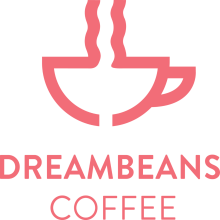Coffee Growers and Nature Hand in Hand
Coffee growers work with nature
A recent study investigated how bees helped fertilise coffee plants and how birds helped control pests. The study demonstrated how working with wildlife might increase farmers’ income. But it’s only one of many advantages provided by nature to us that we take for granted.
Twenty to twenty-five million households, including dealers, export managers, farmers, and baristas working in coffee shops, rely on the production of coffee for their income. We all need to work as closely with nature as we can to make the business of coffee as sustainable as possible.
Despite the ability of Arabica coffee (Coffea arabica) to self-pollinate, pollinators boost fruit set, yield, and size. Birds are frequently viewed as pest species by farmers because they devour seeds and crops. However, birds eat the coffee berry borer, a tiny insect that is one of the most damaging pests to coffee plantations (Hypothenemus hampei Ferrari).
Researchers evaluated the growth of crops when birds and bees were excluded from the crops on 30 small coffee plantations in Costa Rica. Researchers were able to calculate the economic value of pest management, pollination, and their combined impact on coffee production thanks to the experiment.

The coffee berry borer, Hypothenemus hampei,

Cerulean Warbler (Setophaga cerulea)
Coffee crops are better with birds and bees
Four plants were enclosed on each location with a plastic mesh large enough to allow bees and other small animals to access the plant but small enough to keep foliage-eating birds out. The four additional plants weren’t contained at all. Four comparable branches were chosen from each of the eight plants, and bees were prevented from reaching the flowers on these branches by thin nylon mesh gauze bags.
The findings demonstrated that bees and birds reduced broca infestation while increasing fruit set and weight by 4–11%. When both birds and bees were permitted to visit coffee plants, these effects were at their peak. According to the study’s authors, eliminating both birds and bees would result in an average yield loss of 24.7 percent, or €1,066/ha in losses.
When two processes interact in a way that is more beneficial than the sum of their individual effects , this creates great synergy. Increased yields may result from interactions between various animal pollinators. Beekeeper-managed honeybees are occasionally employed to pollinate agricultural crops. The presence of wild bees might alter the behaviour of managed honeybees. For instance, various bee kinds may have varied feeding habits, which results in an overall increase in movement and flight frequency. This behaviour can result in a large boost in crop yield.
Shade-grown coffee
Although coffee is grown in some of the planet’s richest environments for animals, agricultural practices have become more and more rigorous. This poses a threat to bird species like the Cerulean warbler(Setophaga cerulea) and Golden-winged warbler, which are already designated as being of conservation concern (Vermivora chrysoptera). The insects from the woodlands which have been replaced by coffee fields are a source of food for many of these bird species.
Coffee that is raised in shade and planted beneath a tree canopy is one approach to benefit animals on farms. In addition to housing birds and the insects they eat, it also yields better coffee. Coffee farms that grow in the shade benefit threatened primate species like the Javan slow loris (Nycticebus javanicus).

Coffee farmers need help too
Farmers need the assistance of conservationists to create plantations that balance the demands of animals while making a healthy profit. Closer to home, intensive farming affects local fauna as well. The number of species like turtle doves (Streptopelia turtur) and skylarks (Alauda arvensis) that inhabit farms has drastically decreased in the Ireland and Britain. By leaving areas of thorny grassland and scrub, farmers can significantly improve the environment.

